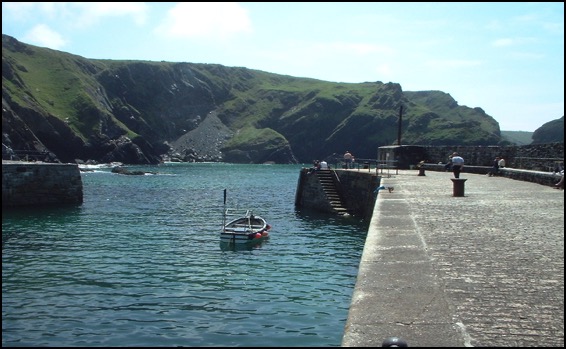Mullion Cove
// Devonian
The Lizard has one of the most complex geologies of anywhere in Britain and nowhere can this be better seen than at Mullion Cove.
The character of the Lizard Peninsula reflects the variety of the rocks contained in a cross-section of the ocean floor called an ophiolite, which was (unusually) thrust over the ‘native’ bedrock within a geologically compact period of only around 35 million years. Ocean crust almost always slides under (subducts) continental crust.
From the north cliff of Mullion Cove, to the southwest of the village, it is possible to take in much of the varied geology of the Lizard in one view. To the right of the harbour wall - and the right of this picture, lies the conical stack of Scovarn made from serpentine. Out at sea lies Mullion Island, made entirely from a pile of pillow lavas which first oozed out of the ocean floor as a result of ancient sea floor spreading.

On the other side of the Cove, the end of the headland seen on the right of this picture - known as the Vro - is made of yet another metamorphic rock called Hornblende schist, while everything to the left of the boat is serpentine.

The character of the Lizard Peninsula reflects the variety of the rocks contained in a cross-section of the ocean floor called an ophiolite, which was (unusually) thrust over the ‘native’ bedrock within a geologically compact period of only around 35 million years. Ocean crust almost always slides under (subducts) continental crust.
From the north cliff of Mullion Cove, to the southwest of the village, it is possible to take in much of the varied geology of the Lizard in one view. To the right of the harbour wall - and the right of this picture, lies the conical stack of Scovarn made from serpentine. Out at sea lies Mullion Island, made entirely from a pile of pillow lavas which first oozed out of the ocean floor as a result of ancient sea floor spreading.

On the other side of the Cove, the end of the headland seen on the right of this picture - known as the Vro - is made of yet another metamorphic rock called Hornblende schist, while everything to the left of the boat is serpentine.

